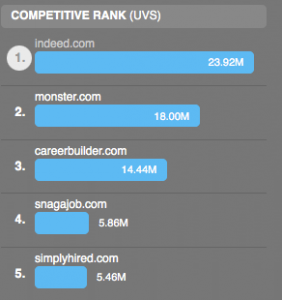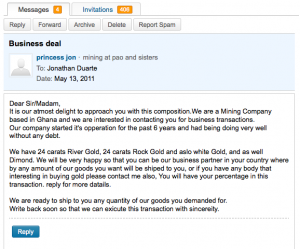Jobvite, an applicant tracking software firm that helps employers post jobs and track candidates during the hiring process, recently released it’s annual “Social Job Seeker Survey”.
While I normally enjoy reading through this and other Recruiting and Job Search Surveys, especially the annual “Source of Hire Report” from Gerry and Mark at CareerXRoads, I don’t think this survey should be considered any more valid than most recruiters empirical evidence regarding social recruiting.
This one is just… I don’t know… just off the mark a little bit.
Before we get into some of the details, I first must say that I do think that Jobvite’s Social Recruiting Surveys continually seem to be dead on, so I don’t know why this one is weird, but here are my thoughts.
First off, if the poll originally had 2,108 respondents, but only 1,266 (60%) were part of the American Workforce, doesn’t that mean that the method of sampling was way off anyways? What method was used to delete the 40% of respondents? And, if these candidates weren’t located in the US, was using a “online opt-in panels” a very good source of determining the accuracy of the average American Workforce?
Second, on page 9, the results say that 83% of respondents (who met the survey criteria) had a Facebook account. That sounds fine. But, the results show that 46% of the “US Workforce Sample” had a Twitter Account and only 41% had a LinkedIn account. Even considering that LinkedIn is more of a professional, versus part-time and retail industry network, I still can’t believe that this is accurate. More of the US Workforce is using Twitter than LinkedIn… Really?
This might be the case, if Twitter is predominately being used for gossip, news, and entertainment… heck if Justin Bieber were headlining LinkedIn, I’m sure the stats on LinkedIn might be a little different, too.
Here’s a stat that pretty much made me doubt the entire survey process.
On page 12, the results show that respondents stated that 26% of respondents stated that Newspapers were “directly responsible” for finding their current/ most recent job, while Referrals were only 5% higher at 31%.
Really???
Maybe there is problem with the way the question was asked, or how users considered the question, but come on… Newspapers directly responsible for 26% of current jobs… I don’t think so.
If that stat was even remotely valid I’d start buying shared in all the trashed newspaper stocks. Has anyone seen what has happened to newspaper classified revenue numbers lately… reality is proving just the opposite of the study.
If that wasn’t enough, on the very next page, the study reveals that 41% of respondents found their “Favorite/Best Job from a Friend or Family”…
Empirically, and from other studies such as the Annual Source of Hire studies, and even other JobVite studies, many of us in the indusry would agree that this is probably pretty accurate.
So, what’s the difference between this question and result, versus the last question and result? Sounds more like a problem with the polling. Is it how the question was asked? Who knows. I’m no statistical analysis expert, but this doesn’t seem to make sense.
Finally, and this was the final “statistic” that made me want to write this blog post…
On page 14, “Who are the job seekers on Facebook?” the study shows that the largest poll of respondents had an annual income of over $100,000 (25%), while in the next result stated that the largest pool of respondents (34%), state that their “Education” level was “Some College”.
WHAT???
Is this study really stating that the largest single pool of job seekers are people making over $100,000? but yet at the same time this same group of job seekers didn’t even finish college? Come on!
So, if I read this 2012 Social Job Seeker Survey correctly,
85% of the American Workforce has a Facebook account, and of those 85%…
25% of them make over $100,000 per year, and
34% of them have “some college” education.
I’m not sure if this was the best work the polling company has ever done.
What are your thoughts… I’d love to hear them, because I think that recruiters have a much better view of who they are hiring from Facebook, and I’m sure it’s not a bunch of $100K a year, non-college graduates.



